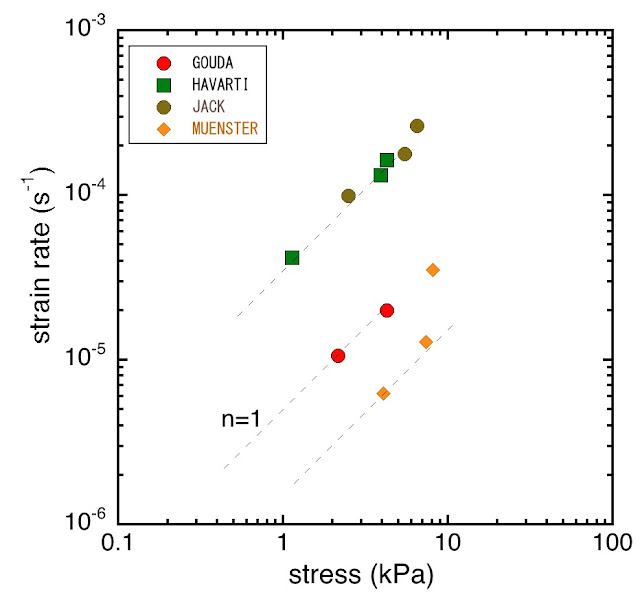I don't know anything about the hydrosphere or the carbosphere, but those "in the know" assure me that the way these components travel through the earth is highly dependent on the rheology of rock. So Uli Faul (from MIT) and I are giving lectures on Rheology, as well as a hands-on rheology tutorial.
For the tutorial, we decided to let students perform a creep experiment in real time. The students broke up into 3 groups to perform creep experiments on 3 different types of cheese. During the week I went with Michael Manga (from UC Berkeley) to raid his machine shop for different weights to place on top of the cheese. We gave each group 3 different size weights so that, in theory, they could come up with a flow law for their cheese. Here is Team Havarti. They were unfortunate enough to be given very tall, unstable weights. Despite this, they did a great job of collecting the data as the havarti shortened.
Here is Team Gouda. After unwrapping the classic red wax, they discussed a plan and started measuring.
And finally Team Jack, with the heaviest weights.
Despite huge error bars in estimating stress (which they had to do by calculating the volume of the cylinder and the density of the metal - but what about those holes?) and uncertainties in measuring shortening with little rulers, the groups came up with surprisingly nice creep curves. Here is my favorite curve, the one for Gouda at the lowest stress. The team didn't quite capture the immediate elastic response, but they got everything else. At about 1900 seconds, they removed the weight, so that is the relaxation portion of the curve at the right.
Although it was challenging with so few data points, I estimated a strain rate for every curve that the students gave me. Quite shockingly, the strain rate vs. stress curves were quite nice. I included my muenster data from the trials at home.
The n=1 slope in log-log space indicates that the deformation is Newtonian. If this was a polycrystalline material, I could say that it was deforming by diffusion creep. However, in the case of cheese, it has to do with proteins and fats and I really have no idea what is happening at the microstructural level. But the curves are nice. Great job everyone!





